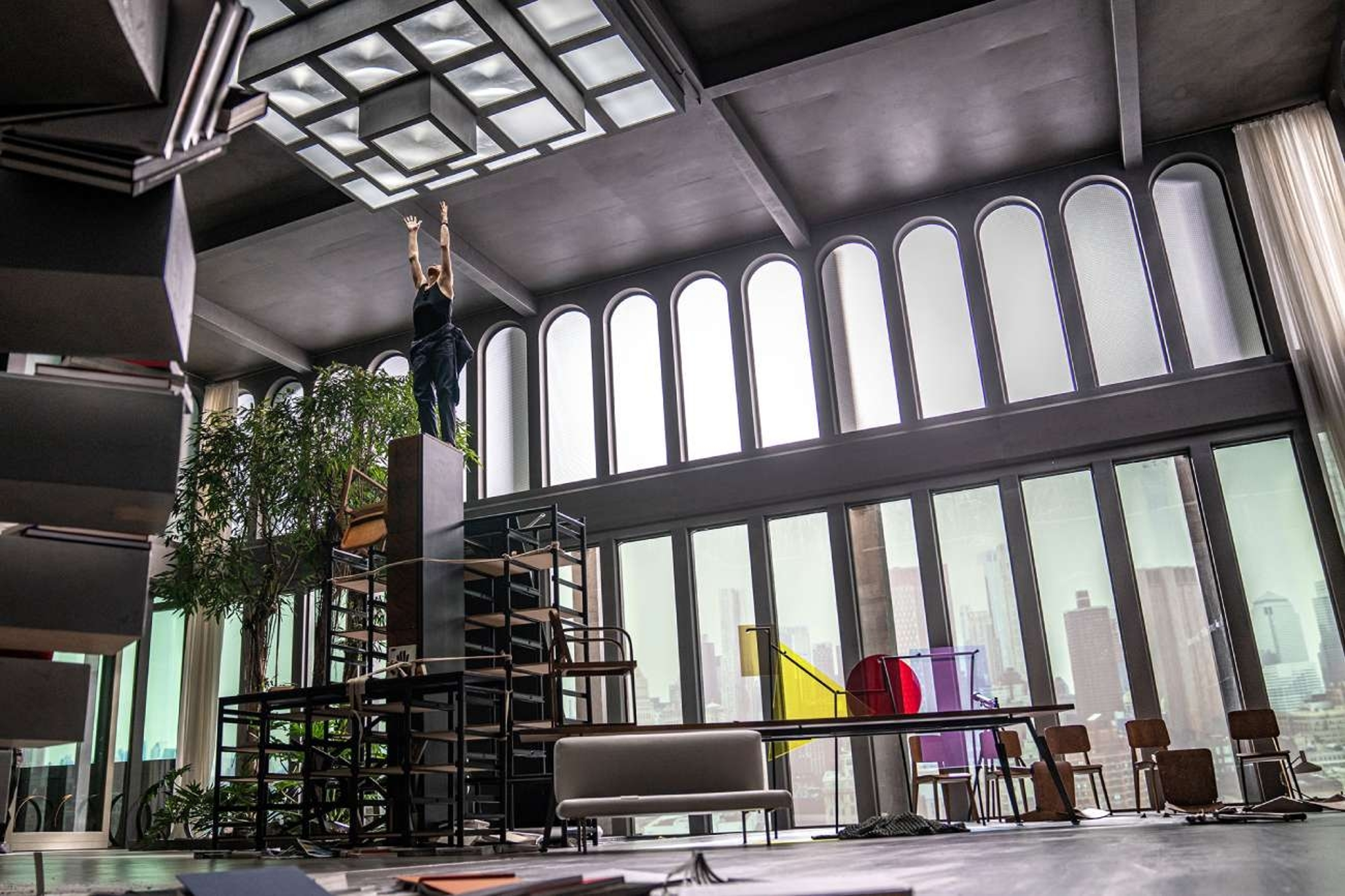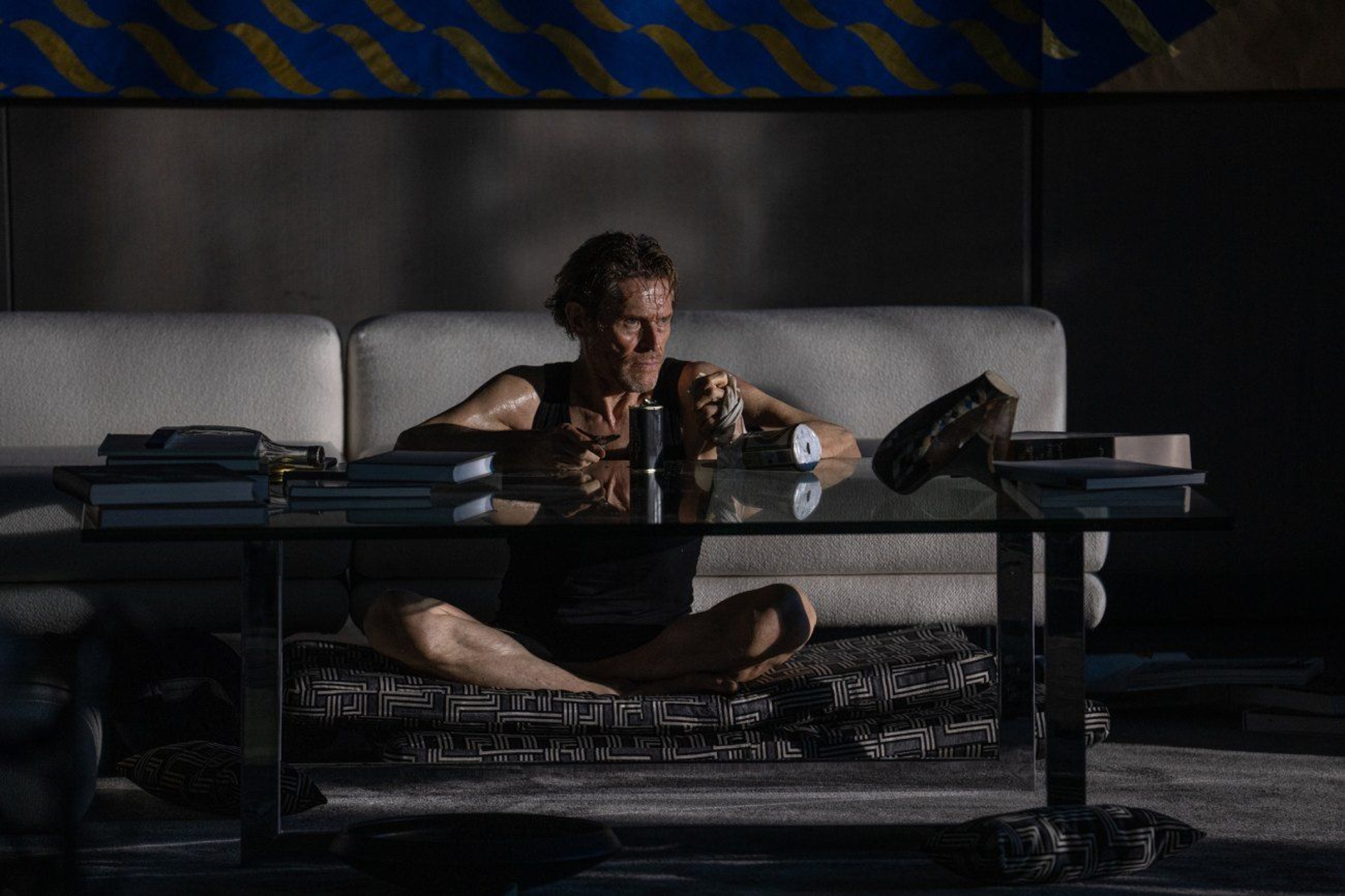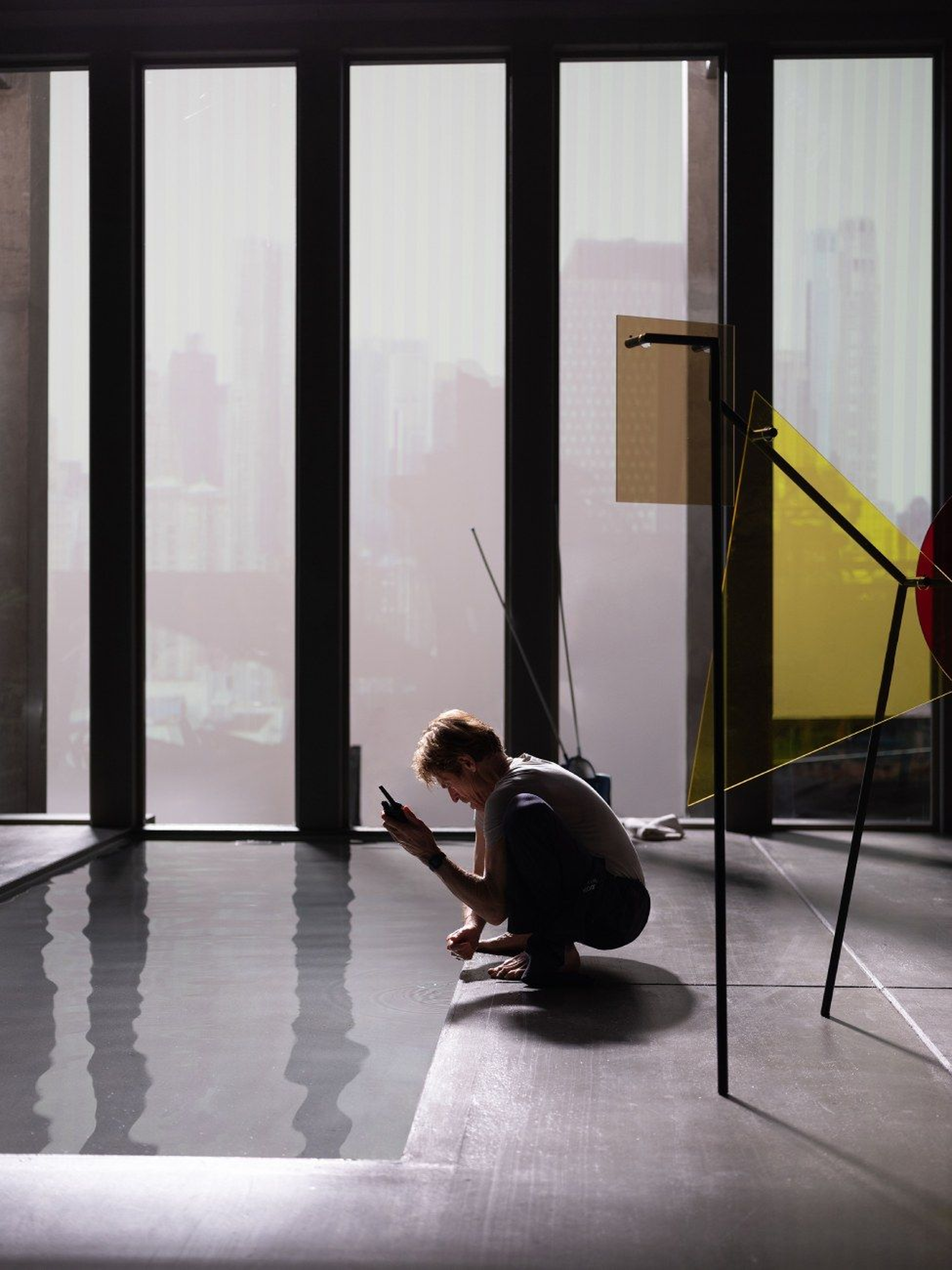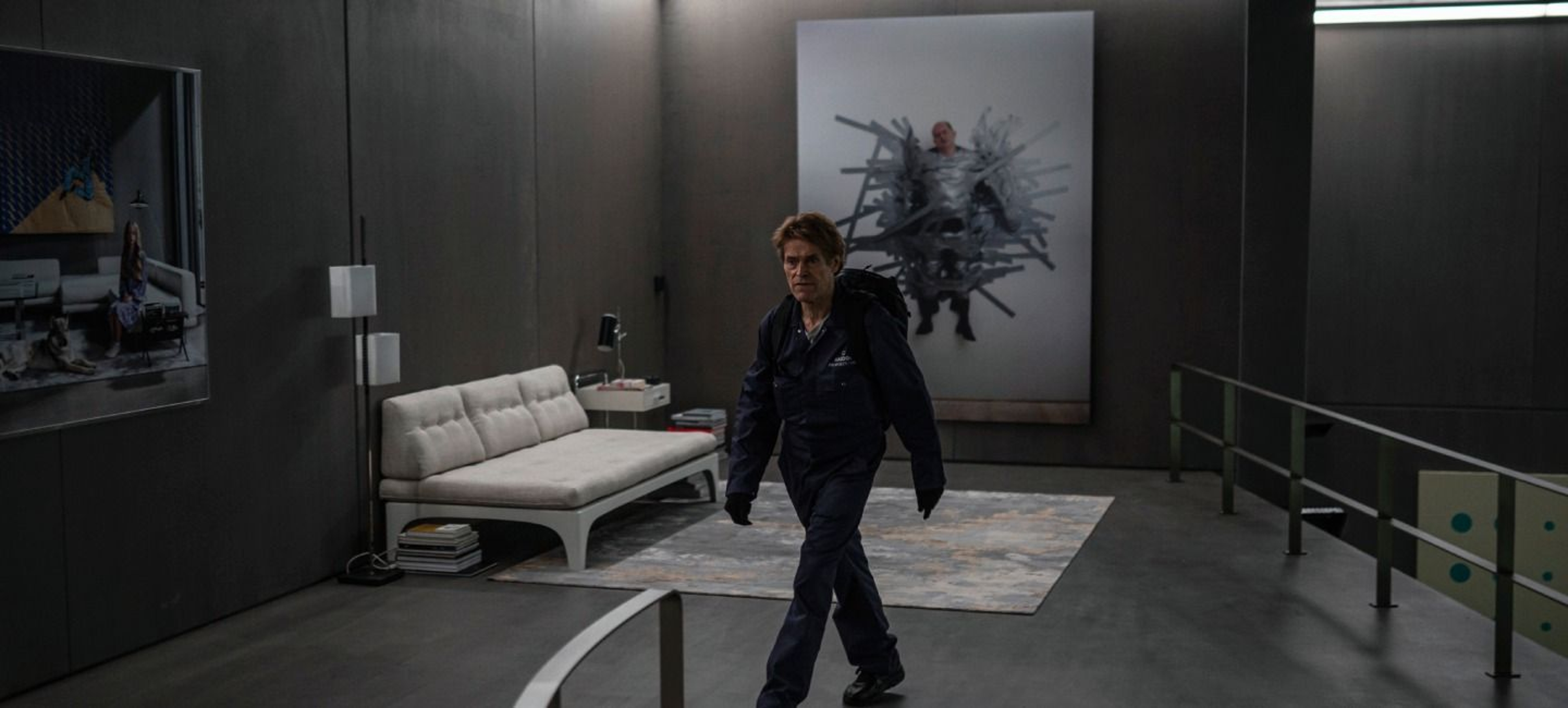In Vasilis Katsoupis’ psychological thriller, Inside, Willem Dafoe plays Nemo, an art thief whose heist goes awry when he finds himself locked inside a high-tech luxury penthouse. With no viable means of escape, Nemo struggles to survive in the gilded cage filled with contemporary art and refined fixtures, using all of his imagination and ingenuity to see how he might transform high art into a mechanism of survival.
To help create this space, Katsoupis turned to production designer Thorsten Sabel, with whom he created the unique film set. “Together, we treated the penthouse as a giant birdcage made of glass and cement—where capitalism meets brutalism,” Katsoupis recalls in the production notes. Indeed, Sabel’s finesse and style transformed the cutting-edge modernist space into an essential dramatic element of the story. Screenrant writes, “The apartment itself, strikingly rendered by production designer Thorsten Sabel, becomes a character in and of itself.”
We spoke with Sabel about the creation of the space, his architectural inspirations, and the moral of the film.
The official trailer for Inside

Creating the tower in Inside
How early did you start designing the space for Inside?
I met with Vasilis Katsoupis quite early. We wanted to start one year before we shot, but things kept getting pushed. It took a year and a half before we could shoot. During that time, we thought a lot about what we wanted the apartment to be like.
You built the apartment on a soundstage. Had you thought of using a real apartment or was the plan always to build it on a stage?
We needed to build it on a set because we had to control everything. In the end, we sort of destroy it. We would have wanted to shoot in New York, but we couldn’t afford that, so we had to bring New York to the studio. Also, you really can’t find a location that huge. Having the apartment on a set allowed us to build elements for everything we wanted to happen in the apartment and to allow appropriate space for both the camera and the acting. We were looking mostly to create a space that would stay interesting for the length of the movie.
Did you have any actual apartments in mind as models for the space?
Not really. We were thinking of a lot of gallery spaces, like the Boros Bunker in Berlin. We thought a lot about the work of different Brutalist architects from Gottfried Böhm in Cologne to Oscar Niemeyer in Brazil. There were lots of examples of Brutalism in Eastern Europe that we drew on. For the space, we thought of it as a mix between a gallery and a luxury apartment.

Willem Dafoe in Inside
The apartment is very much a character in the film. How would you characterize it dramatically?
It had to look like a high-tech apartment in New York. We wanted it to feel huge and overwhelming, making one feel lonely and small in it. It’s really a bit rough and uncozy. In many ways, it looks a bit like a huge concrete cage, like a birdcage. A huge, expensive, ordinary, and uncomfortable apartment.
In planning the space, you needed to account for everything that happens in the script.
In designing and furnishing the apartment, we thought about how everything would have a secondary meaning and use throughout the film. In the end, Nemo reuses many of the objects in the apartment to construct a tower. He reuses the artwork to construct shelters. So many of these things provide Nemo with a means to survive.
We never meet the owner of the apartment. What does the design tell us about him?
He is never there but you sense things about him from the space. He’s an architect and loves art. As Nemo explores the apartment, you learn little things about him. There’s a photograph of him with his daughter. There’s a huge architectural office in the space. It is hard to say who he is, but I think through the art and the objects, you start to feel the owner. He is just a ghost in the house.

The fish pool in Inside
Are there specific things you designed that you feel worked particularly well in the film?
I love my staircase. The big spiral staircase that comes down to the gallery. It is really something. In the end, I feel the whole composition works quite well. During production, I wondered if the design would work. In the end, the apartment surprised me by how well it turned out. I loved, for example, all the concrete in the apartment, which is just painted wood. It looks great. And I love how the fish tank looks.
You start with original art and high-end furniture and end with something else.
The artworks were all original, and some of the furniture we created connect to very high-priced pieces. But when Nemo is creating the tower, he's just ripping apart this expensive furniture. What we wanted to show is that, in the end, these things are just tools that he needs to survive this ordeal. It is not an expensive piece of furniture anymore. It is just material.
This interview has been edited and condensed for clarity.
